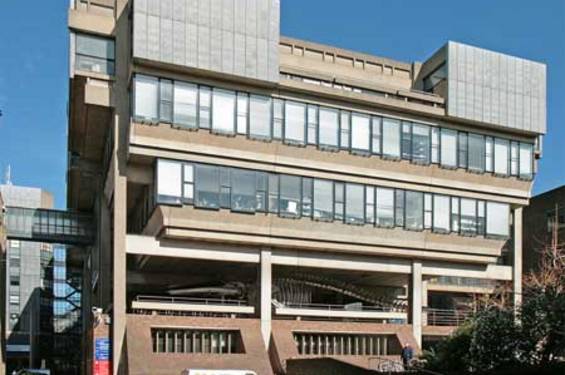This website uses cookies
This website uses cookies to enable it to function properly and to analyse how the website is used. Please click 'Close' to accept and continue using the website.



April 2008 - The New Museums Site building by Arup Associates, 1966-74
Text and images by Barnabas Calder
This is Cambridge’s most elating piece of Brutalism. No other post-war building in the city has such a Piranesian charge to it, nor such elegantly ostentatious engineering.
By the mid 1960s the university had been aiming for some time to re-plan and rebuild this confused area of laboratories and teaching buildings. Murray Easton and Leslie Martin had been consulted as planners, and Denys Lasdun had been appointed architect and drawn up a scheme for three tall towers. The impact of this design on the Cambridge skyline was the subject of a planning dispute and, after the university suggested building one tower only, Lasdun resigned rather than produce a mutilated scheme. The job passed in late 1964 to the newly-founded architectural partnership arising from Arup Engineering – Arup Associates, led by Philip Dowson.
The building, which cost around £1.9 million, was erected to house a variety of university facilities: the zoology department and its museum, the metallurgy department and the computing centre. It is the zoology museum that provided the whale skeleton which hangs in the podium level, mirroring the structural economy and clarity of the building above.
Given his background with Ove Arup & Partners, it is unsurprising that Dowson’s building is driven by engineering. The structure makes extensive use of precast concrete elements, including two-storey sections of column brought in by lorry to the constrained site. Arup Associates claimed that this reduced the level of vibration caused by the construction work, and thus interfered less with experiments in neighbouring science departments. This slim concrete skeleton stands on a brick-clad podium of in situ concrete, and floor decks are also cast in place giving rigidity to the spindly structure.
Beams fit between columns in a manner at once logical and expressive. The chunky rectangular elements are faintly reminiscent of timber construction. In counterpoint with the light, skeletal structure are two lead-clad towers ‘plugged in’ to the main building by glazed staircases.
The building is cut away at podium level, with the intention of linking in to a network of elevated pedestrian ways through central Cambridge. After most of the buildings involved had been completed, however, the university refused on security grounds to link Dowson’s podium with the rest of the network. The recent demolition of the walkways opposite have set the seal on the isolation of Dowson’s podium, but it remains in regular use for circulation within the building.
The openness of the podium has a vital architectural function: to demonstrate the lightness of the four pairs of structural columns on which the top three storeys stand. Above this layer of columns and glazing the building becomes much heavier in appearance, stepping out at each storey and capped with lead-covered plywood panels – an expression of weight to dramatise the lightness of the structure beneath.
The design of the glazing and the stepped section make the windows challenging to clean; there is nowhere below to rest a ladder, nowhere above from which to hang a cradle. This is a trivial quibble, however. What is unforgettable about the building is the extraordinary sensation of standing beneath this massive overhanging structure next to a column which appears too slim to take its weight. It is part of a tradition of sublimity, of enjoyable terror, which runs through 1960s architecture. Dowson’s New Museums Site building is an exceptional example of it.
Barnabas Calder is lecturer in architectural history and theory at Strathclyde University, Glasgow. His research centres on Brutalist architecture in Britain and North America.
Look for past Buildings of the Month by entering the name of an individual building or architect or browsing the drop down list.

Become a C20 member today and help save our modern design heritage.